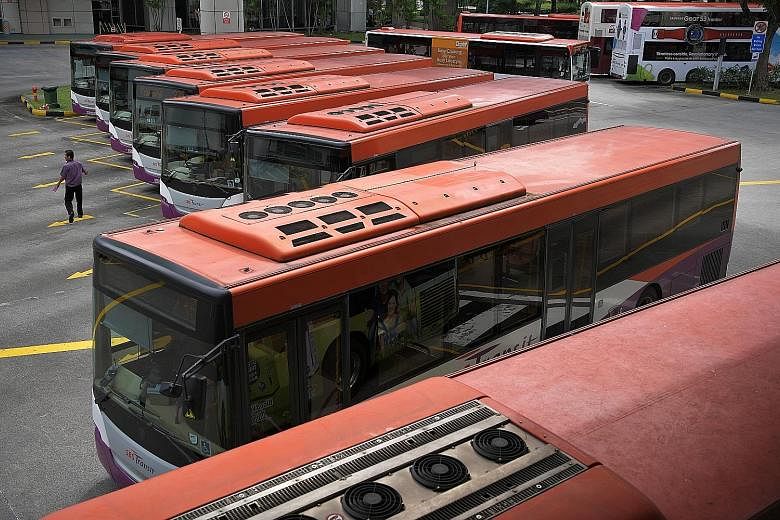A "quiet revolution" in the bus industry has led to better service levels, from shorter waiting times to less crowded buses over recent years.
But these enhancements have come on the back of subsidies borne by taxpayers - subsidies that are set to grow, said Transport Minister Khaw Boon Wan yesterday.
To ensure that the burden on taxpayers does not become excessive, he said commuters have to understand the need for fare adjustments and regular optimisation of bus services, which may require services to be re-routed or merged.
Such measures are not popular among residents along routes which are being adjusted, he added, and the authorities are "constantly under pressure from local residents" to retain bus services.
"Yet the need for rationalisation is important," Mr Khaw said, pointing out that bus services with low ridership numbers would mean a waste of subsidies.
Over the past five years, he noted, the Government has spent $1.1 billion to help bring in 1,000 new buses and 80 new services.
The next five years will see subsidies hit $4 billion as the transition to the bus contracting model - where the Government owns all fixed and operating assets and operators are paid a fixed sum to ply services - is completed.
Another quiet revolution is emerging through the use of more advanced bus technologies, said Mr Khaw - from Web-based diagnostic tools and predictive maintenance to ensure buses run smoothly, to the emergence of hybrid and electric buses.
These mean new maintenance challenges for bus technicians and engineers, he said at the signing of an agreement - between the Land Transport Authority (LTA), the four public bus operators here and stakeholders such as the Institution of Engineers, Singapore (IES) - to raise the competencies of bus technicians here.
A new certification for bus technicians, with industry-wide recognition, that is being introduced will not only enhance their employability, but also prepare the workforce for emerging technologies and create industry-wide benchmarks for the proficiency of technicians.
By the middle of next year, bus technicians can be certified at three levels, depending on their competency. The certification, to be jointly awarded by LTA and IES, will require candidates to pass a test of proficiency and understanding of areas such as the propulsion and pneumatic systems of buses.
Such industry-wide certification is "especially important as more operators are entering the market under the bus contracting model", said Singapore Bus Academy dean Goh Puay San.
By the middle of next year, two other initiatives will be introduced to raise the professional standing of bus technicians and engineers.
Automotive and bus engineers will be able to have their experience recognised through a chartership, a form of professional accreditation, administered by IES.
Mr Edwin Khew, president of IES, said it was committed to "raise the professional standing of engineers and technicians to support manpower retention and attraction" through the new certification and chartership programme.
The Singapore Bus Academy will also work with the Institute of Technical Education and bus operators here to develop a bridging course for ITE graduates who wish to become bus technicians.
To meet the needs of a growing public bus sector, more than 1,100 bus technicians and engineers will be required here by 2030, said Mr Khaw at the event held at the Devan Nair Institute for Employment and Employability (e2i) in Jurong East.
National Transport Workers' Union executive secretary Melvin Yong, who attended the event, said in a Facebook post that the certification would give workers the opportunity to take on "higher-value jobs with better career prospects".
Also held yesterday at e2i was a career fair offering more than 240 vacancies with the four bus operators here - SBS Transit, SMRT, Tower Transit and Go-Ahead.
Correction note: This story has been edited to provide the correct name of the Institution of Engineers, Singapore (IES). We are sorry for the error.


